Day 5: Around Aswan and Back on the NileIt was the beginning of a brand new year, and the morning was a beautiful one. What beautiful sights were we going to see on the inaugural day of the year?
We took the coach with Hani once more past the church, and down the valley into the dusty residential areas; over the lower dam once more, through the villages that made up the outskirts and up to..
the high dam.
The on-standby tanks told us we were nearing something that would be strategically advantageous to gain control of, or blow up. There was a feeling of being out of place when a tourist bus full of snap-happy westerners goggles at a bunch of blokes who could have several kills under their belt. Onwards we snaked up through the winding streets as the soldiers looked on.
You would think that if you were going to head up to a massive dam, as a tourist destination it would have to have some sort of draw beyond the ability to stand on it and look off into the distance. Maybe a tour of the innards or something; get an appreciation of the thousands of tonnes of machinery and masonry holding back millions of gallons of water.
You'd think so, but no. We got off the bus and, after negotiating the traffic across the dam, were told to go to a small gate, where our tickets would be inspected. Ridiculously, the gate stood on it's own, and you could just walk round it if you wanted.
On the other side of the gate was a load of coaches, (into which ours had camouflaged itself) and a view over the dam, complete with large electric pylons, several structures containing machinery, and a long, 45 degree drop as the dam wall fell away into the distance. It was certainly an impressive structure - especially as it was 60 years old. We waited to be huddled into a group, perhaps to be given a tour by one of the many uniformed workers milling about.
No such luck, no-one came to herd us anywhere. We spent a little while looking over both sides of the dam, then it was back on the bus. About as pointless an exercise as you could imagine. A 'friendship memorial' sculpture looked at us from one end of the dam as we drove past, as if to say we should be grateful for it's existence.
At least the next excursion would be a little better, although it had the slight problem of familiarity. We were heading off back to
Philae Temple, this time to see it by day.
The port, which was previously almost deserted was now heaving with vendors. A dozen or so robed men with towels and rugs slung over their shoulders came to greet us on our disembark, and beyond the turnstyles, the long cobbled run down to the shoreline was now lined down each side with blankets, on top of which was every trinket you could possibly conceive of buying, each manned by a perpetually hopeful vendor.
Once at the shore, we got in the first available boat and all wobbled our way inside. We traced the same route to the island, but this time, Hani decided to tug a little on our emotions and tell us about the
Nubians.
A race of people originally from a more Sudanese climate, their skin is darker and they have a more African appearance, they were driven from their origins by the Makorae tribes, and thus have no real defined place any more. Hani by happy coincidence had a friend who was in the boat for the ride, who -
by coincidence - happened to have an armful or two of trinkets to sell now that he had us by the heartstrings. A couple of our group took the bait as we glided along the calm waters.
Philae by day is as impressive as by night, and the beautiful noonday sun made the light sandstone almost glow against the cloudless blue skies. Hani took us round once more, pointing out some of the areas left in the shadows from the night before, and then skipped off to the outdoor cafe with instructions for us to find him in a half hour or so.
Since we had explored quite a lot the previous night we spent our time enjoying the sun and trying to capture some of the sights of Philae.
The nooks and corners of the temple now fully lit, included an early example of religious re-appropriation, where the Romans had converted one of the temple rooms into an early church, complete with a crude stone altar and a vandal-level hole bored into the stonework of a nearby wall so a candle, or a statue may be added. Around the sides, the beautiful artwork had been defaced with early Coptic crosses.
Outside,
a small flock of sparrows argued and sunned themselves on one of the more disassembled temple buildings as they tucked into some bread left by a kindly unknown. In the daylight, the waters beyond the grounds were no longer a dark blanket; a handful of wooden posts of varying length stuck out of the waters, highlighting the original place where Philae temple once was before the dam caused the water levels rise (
see part 3).
There were some beautiful plants as well; multicoloured jasmine blossoms greeted our entry, and a large bush filled with yellow pompom flowers took a central place in the open grounds. A man, spotting my interest, took a seed pod from the ground and handed it to me. Even for such a benign act, his immediate reaction on me taking it was to hold out his hand for a tip, which was unfortunately just too late, since I had quickly thanked him and then not noticed as I turned my back. Ha.
The seed pod is now sat in my drawer in the kitchen, awaiting a place for the seeds to be sown and to germinate.
We returned to the boat and headed back across the waters. The bus took us back along the dusty roads towards the centre of the city, where we would learn more about the Nubians at their own museum. We stopped off briefly at a papyrus shop that was full of beautiful designs of varying sizes. As with the Alabaster shop, it was tailored for visiting groups and we were treated to a well-rehearsed but rather brief tutorial on how papyrus paper is made, followed by a criminally short amount of time to go round and choose something to buy. We had some differences as to what would be appropriate to take back (I wanted big, the lass wanted small) and unfortunately for them, our inability to decide under pressure meant that we left without paying them a bean.
The
Nubian museum had by now been passed a half dozen times and at last we were able to go inside.
A large, modern building surrounded by a walk-round garden (that we didn't get to see). Inside, the subdued lighting and large hollow rooms, echoing a few dozen quiet footsteps, spread out the Nubian history, and more generally that of the Egyptian race over the centuries. Though I enjoyed walking around the exhibits, I have to confess my favourite bit was the cafe, where - unexpectedly enough, there was a cage of doves who were being terrorised by one very randy budgie.
Hani shouted everyone from the various corners of the museum back to the entrance and we headed off for one final sight. Since the boat would be soon setting forth back up the Nile, we had a second boat ride arranged, this time at the other side of the dam, in Lake Aswan, at the end of the sail-able section of the Nile.
We retrieved our life jackets and got on board a boat, fittingly adorned with a
Union Jack. Starting at the base of the cliffs on top of which the
Old Cataract, the hotel in Death on the Nile was situated, the little boat chugged along pleasantly in the gorgeous sunlit lake between eastern sail-yachts and large mooring tourist ships.
To give us some photo opportunities the skipper went the long way round the lake behind
Elephantine Island, and squeezing between that and
Kitchener's Island, to get a look at (but cruelly, not visit - grr), the Aswan Botanical Garden that sits on top of it.
As a consolation, the boat was also threaded through the shallow parts of the lake - which would have been little more than mudflats in high summer - to allow us a look at some of the wildlife wading around them. I think we were more bothered about whether we would get out of it without getting moored on the silt just below our hull to enjoy it too much.
We returned thankfully to the boat and our time at Aswan was cruelly over. As we sat down to our food the engines started to roar into life and we set off again as the afternoon sun got past it's best, leaving only some sightseeing as we settled our food on the downstream trip back north to Luxor.
The route home was pleasantly picturesque but nothing really different from before. One sight we were told to look out for was the bridge, which we met in the dying hour of sunlight, giving it a moody, backlit view. It would have looked better lit up but we were a little early. When we returned to our room, our cheeky cleaners had gone to some trouble to approximate me using towels and my discarded life jacket. Is there anything they can't make?
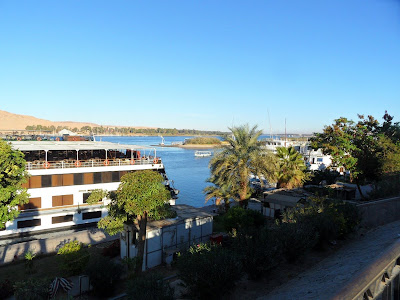


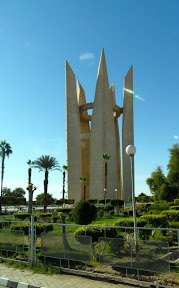

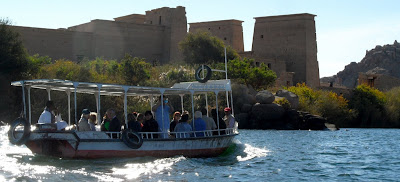

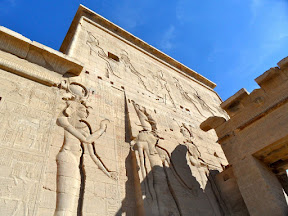
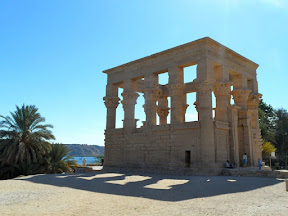
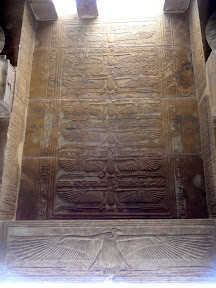


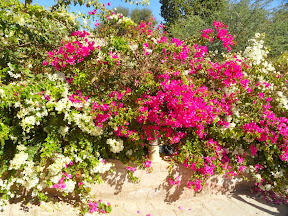
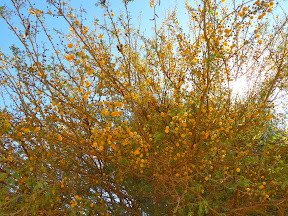
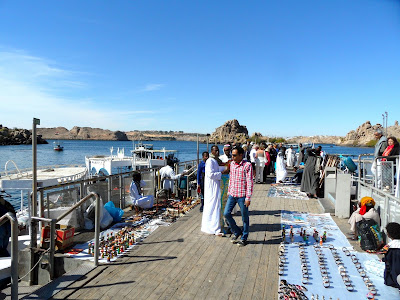
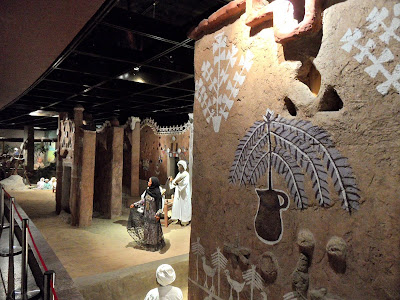







No comments:
Post a Comment